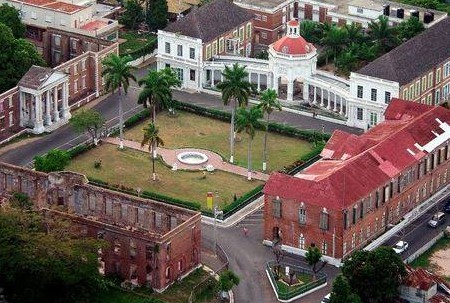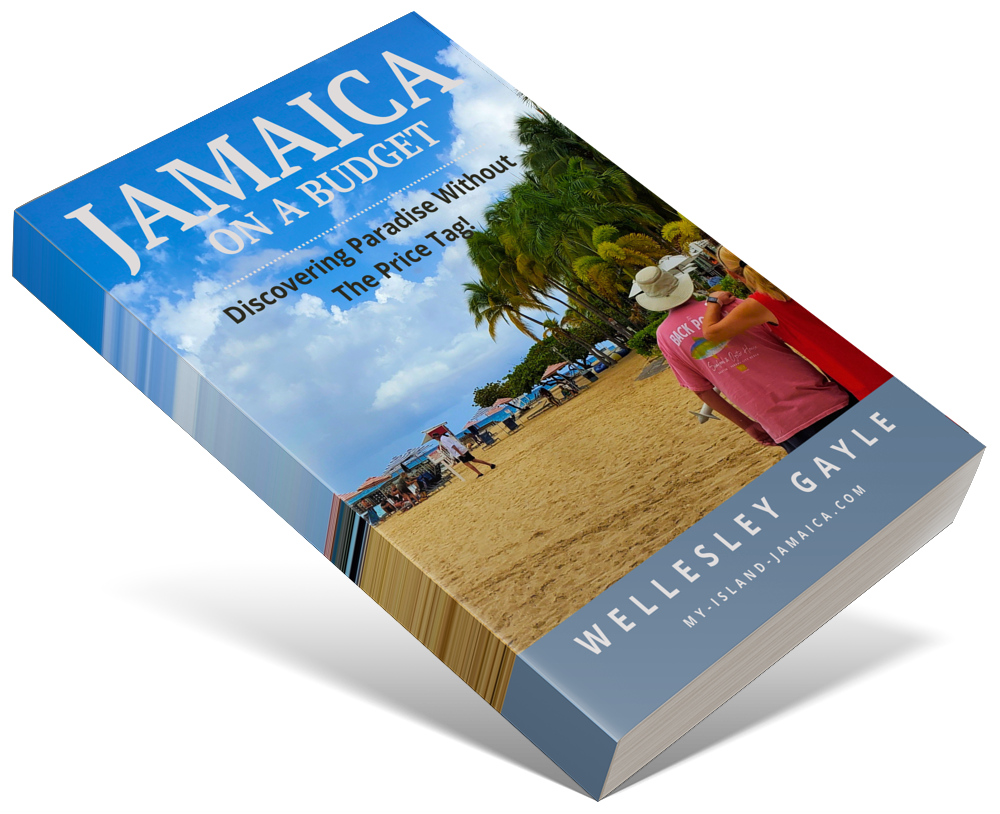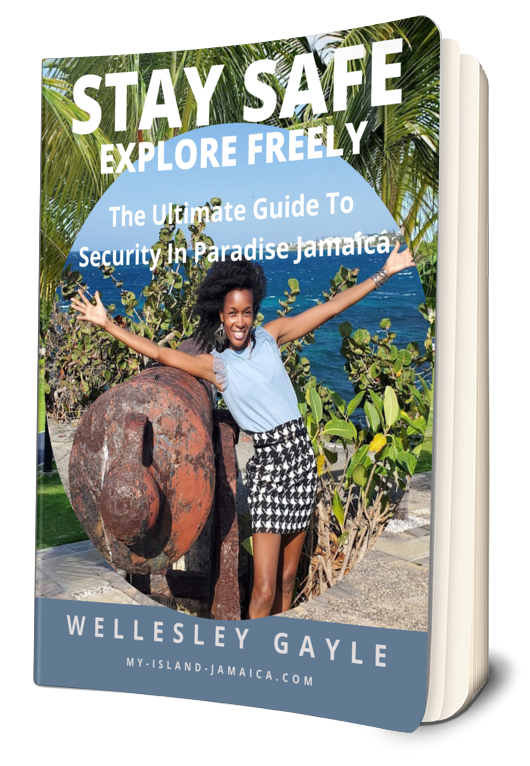Subscribe for all my updates and don't miss a thing! Sign me up!
The History of Spanish Town
Jamaica's First Capital & Oldest Continuously Inhabited City In The Western Hemisphere
Sharing Is Caring! Share this awesome content with your friends now.
by Venesha Johnson | Associate Writer
Spanish Town, St. Catherine Jamaica, is more than just a capital city. It is a town that has been of major historical impact on the island.
New! Take a piece of Jamaica with you💃!
Savour the memories! Now you can get your authentic Jamaican souvenir items, as well as traditional Jamaican herbs, spices and housewares on our popular e-store. Click Here to learn more.
And, if you ever need a trustworthy and knowledgeable local guide, consider booking a private tour with us!
History of Spanish Town
Christopher Columbus left Jamaica to his heirs in 1509, five years after being stranded for 347 days in the northern town of Sevilla la Nueva, now known as St. Ann's Bay. Early Spanish colonists lived in or around St. Ann's Bay for almost 30 years before realising that these areas were plagued by wetlands.
They glanced south to a settlement they called Villa de la Vega, which was located on a large fertile plain (Town of the Plain). It was established in 1534 and became the capital in 1538; it is currently known as Spanish Town.
Spanish Town, which was first inhabited by the Taino around 500 AD and later served as the capital of the Spanish and British colonies for almost 333 years, is the oldest continuously inhabited city in the Western Hemisphere. Spanish Jamaica was generally underdeveloped and impoverished. Cowhides and grease were the foundation of its economy. It failed to prosper and brought Spain more hardship than advantage
When they couldn't discover the gold they were looking for, the settlers gave up and left the island. However, Spanish Town was a wise option for capital because it marked the first time since the Spanish arrived in Jamaica that they made a location where the ground was suitable for agriculture. Spanish Town's vicinity to the Rio Cobre was valued for its impact on public health, while its proximity to Kingston Harbour was valued for its effects on safety.
Between the late 1500s and early 1600s, Villa de la Vega was the only populated area in Jamaica.
Captured by the British
On May 10, 1655, two Spanish fishermen who were allegedly out looking for turtles near Port Morant noticed a fleet of 38 ships approaching them and firing heavy guns. The British were there, and the fishermen rushed off to warn the settlers. These 38 ships were claimed to have disembarked close to 9000 men, which was 3000 more than the island's population at the time. Within days, the nation's capital crumbled.
The British set fire to numerous structures out of rage when they learned that many Spaniards had escaped to Cuba while carrying their goods. The Treaty of Madrid gave Jamaica to Britain in 1670, concluding years of conflict with Spain. Under British rule, Villa de la Vega was renamed, Spanish Town.
Port Royal served as the unofficial capital during that time and the pirates entrenched there, defended the island from invasion until the fatal earthquake in 1692. By this time, much of Spanish Town had been rebuilt. Under the British, the Square was completely reconstructed in the middle of the eighteenth century using Georgian architecture and a grid-like design by John Pitcairne. It is today regarded as one of the best Georgian Squares in the entire globe.
It remained the capital of British Jamaica, until 1872 when the fledgling city of Kingston took over as the capital.
Spanish town in the 18th Century
- The legendary female pirates Anne Bonny and Mary Read who were members of Calico Jack Rackham’s crew were tried, in Spanish Town and found guilty in 1720.
- Lewis Hutchison, the reputed Mad Master of Edinburgh Castle, was hanged in 1773 for allegedly torturing and killing guests on his part of the island.
- The Maroon Treaty, which acknowledged the Maroons as the first independent people of African descent in the New World, was signed in 1725.
- To collect a $300 prize, a gang of armed Maroons marched while hoisting the severed head of the robber Three-Fingered Jack.
- The Morant Bay Rebellion of 1865 was led by Paul Bogle, who had marched in vain to meet with then-Governor Eyre to discuss the situation of the peasants.
Why is it called Spanish Town?
After the British gained control of Jamaica, the town of Villa de la Vega was renamed Spanish Town by the British. This is most likely because it was the only populated city in Spanish Jamaica when they invaded it.
Spanish Town Today
According to the 2011 population census, Spanish Town's population was believed to be a little over 147,000. In Jamaica, it is sometimes known as "Spain" or "Prison Oval".
The latter moniker alludes to the cricket oval or pitch that is situated right outside the St. Catherine District Prison and where some prisoners have a minimal view of the game through their cell windows. The main team for association football at the Prison Oval is Rivoli United F.C.
While the gorgeous historical buildings of the Spanish and British eras remain, Spanish Town is one of the more unsavoury areas of Jamaica and is not a town frequented by tourists.
Sharing IS Caring! Please help me get the message out by sharing this article with your friends on social media (links below). Thnx ;-)
If you found this page useful, please consider subscribing to my weekly newsletter, to get even more.
It tells you each week about the new information that I have added, including new developments and great stories from lovers of Jamaica!
Return to Jamaican Cities and Towns from History of Spanish Town
Return to My Island Jamaica Homepage from History of Spanish Town
References & Sources For History of Spanish Town
- (no date) Jamaica Gleaner: Pieces of the past: The history of a Spanish town. Available at: https://old.jamaica-gleaner.com/pages/history/story0049.htm (Accessed: November 30, 2022).
- Spanish town (2022) Wikipedia. Wikimedia Foundation. Available at: https://en.wikipedia.org/wiki/Spanish_Town (Accessed: November 30, 2022).
History of Spanish Town | Written: November 30, 2022
New! Get My Latest Book👇🏿
|
You asked, I've answered! You no longer need to save for months or years, to enjoy paradise! I spilled the beans! sharing my top tips on finding cozy accommodations and secret gems, only the way a native could! Click Here to pick it up on my e-store and start saving now! |
See The Best Of Jamaica - In Videos!
|
My channel reaches over 140,000 subscribers worldwide and has leveraged over 11 million views, sharing, what I call 'The Real Jamaica'. Subscribe today and join our family of viewers. |
Read More ...
New! Experience The REAL Jamaica!
Book Your Private Tour here and experience Jamaica the way we (locals) do!
P.S. Didn't find what you were looking for?
Still need help?
Click Here to try our dependable and effective Site Search tool. It works!
Or, simply click here and here, to browse my library of over 500 questions and answers! Chances are someone already asked (and got an answer to) your question.














New! Comments
Have your say about what you just read! Leave me a comment in the box below.